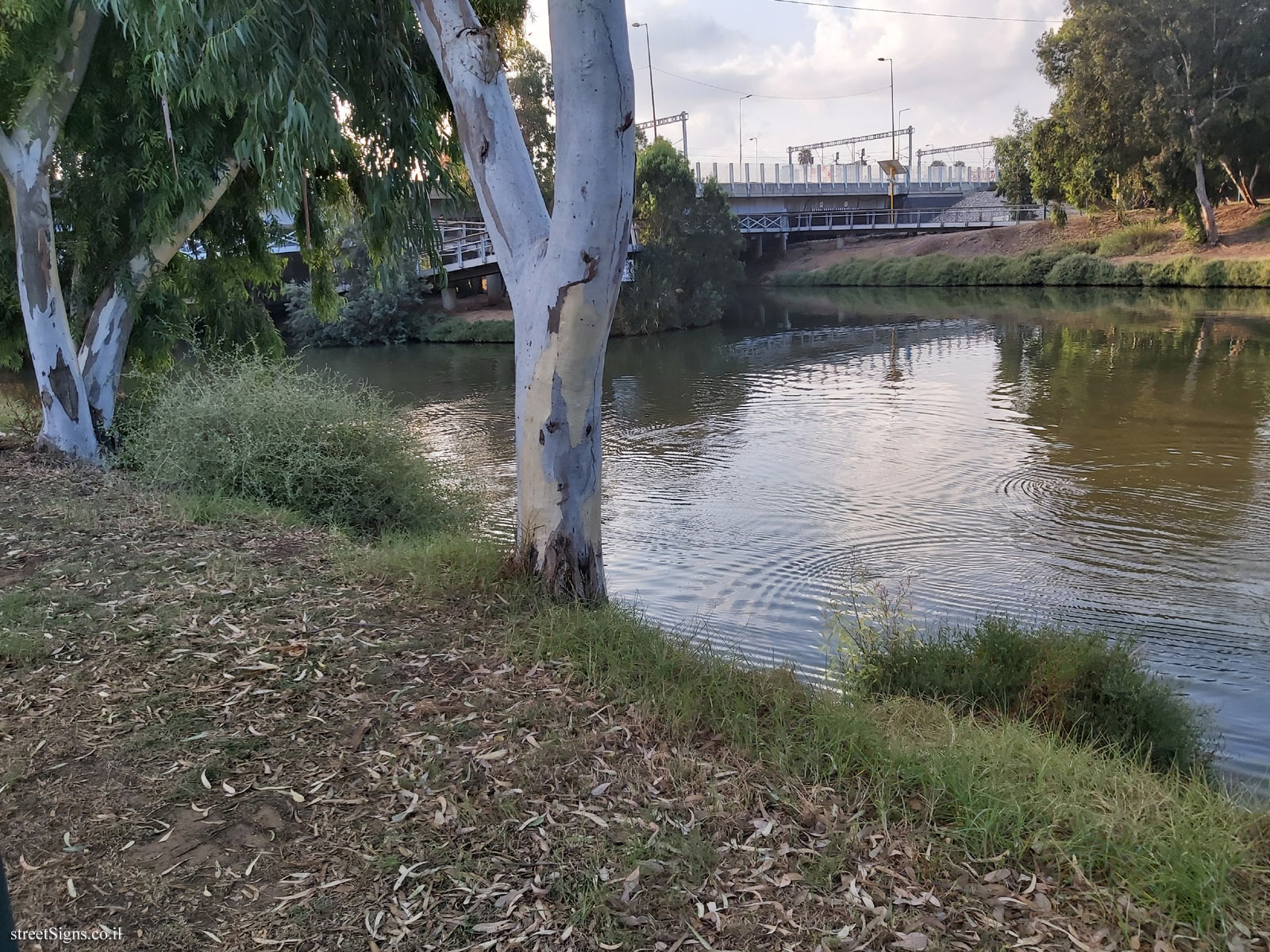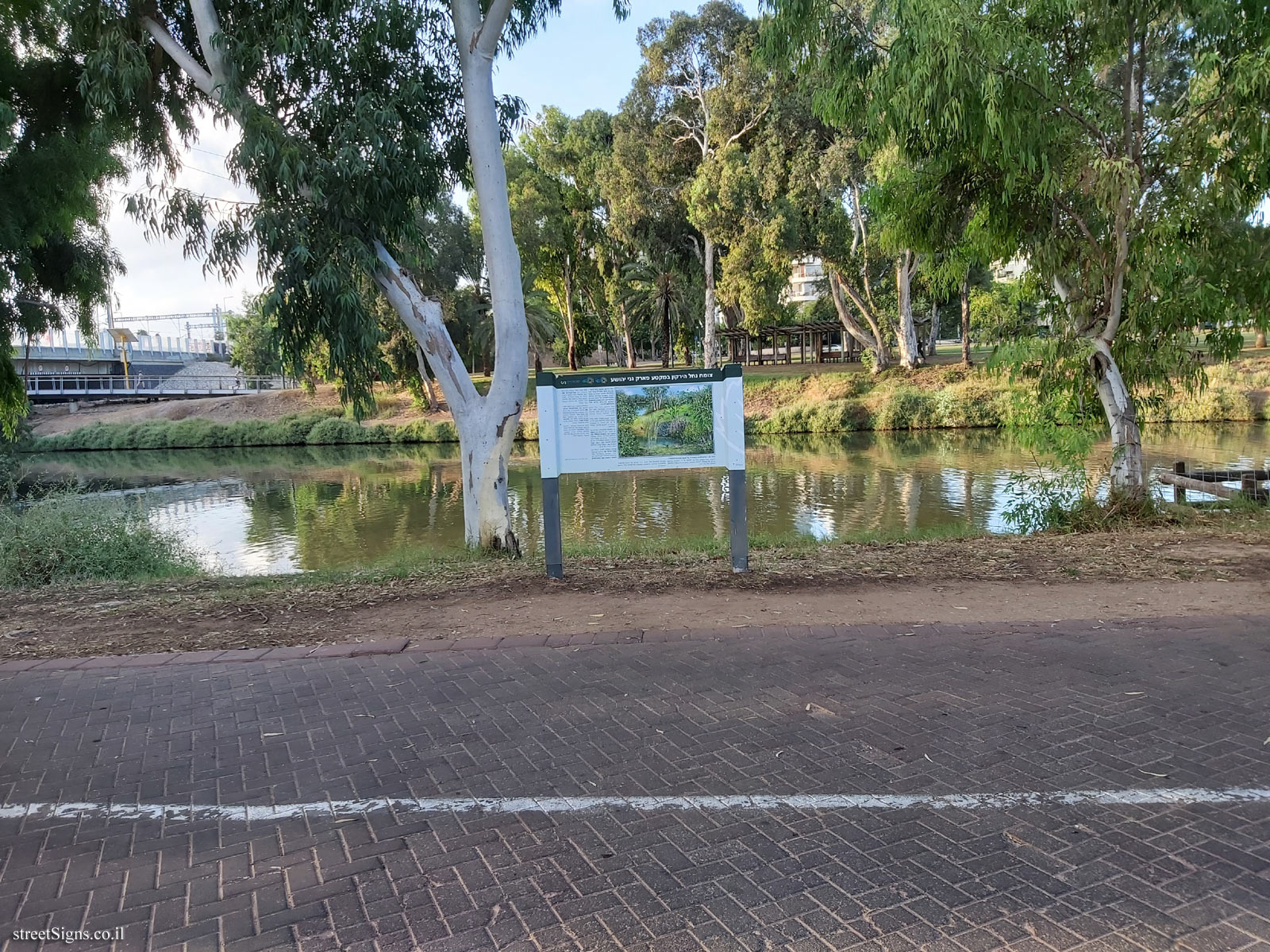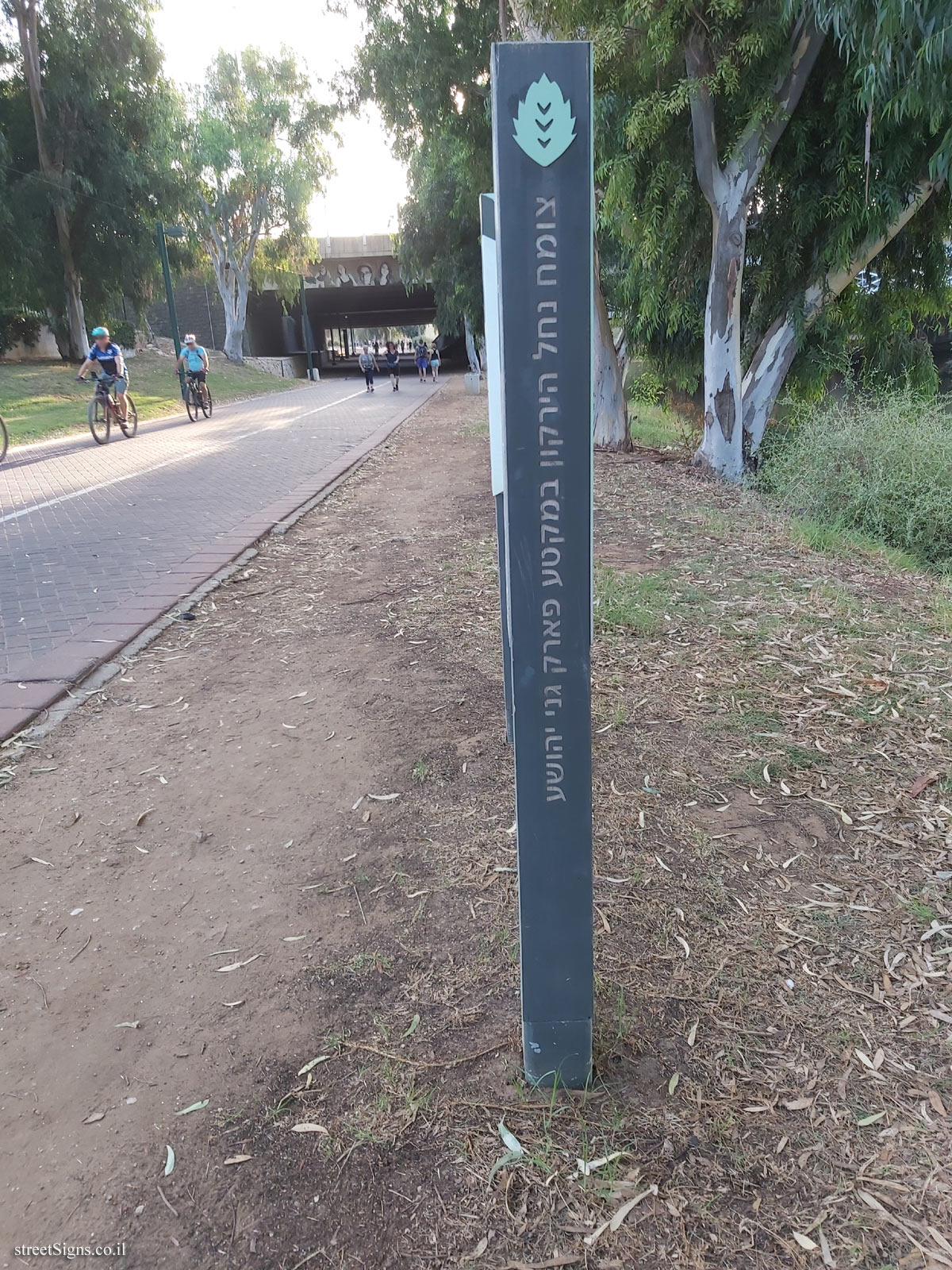A sign from the series of signs scattered along the Yarkon Park and describing the flora and fauna in the park.
Note that some of the plants marked with numbers do not appear on the sign
The vegetation behind where the sign stands was photographed that day
 Click for a larger image
Click for a larger image The following image shows the sign and its surroundings
 Click for a larger image
Click for a larger image On the pillar on which the sign stands is engraved the title of the sign: Vegetation of the Yarkon River in the Ganei Yehoshua Park section
 Click for a larger image Translation of the text on the sign
Click for a larger image Translation of the text on the sign:
Vegetation of the Yarkon River in the Ganei Yehoshua Park section Branding symbol of the city of Tel Aviv-Yafo
Emblem of the Ganei Yehoshua company
Emblem of the Yarkon River Authority
The Yarkon River is a habitat - a unique living environment for various plant and animal species. The changes that have taken place over the years in the quality and quantity of water have affected the diversity of local species. Efforts are currently being made to rehabilitate these living environments and make them accessible to the public. The Yarkon River is a perennial stream that originates in the springs of Rosh HaAyin and is about 27 km long. Due to water pumping, the river’s flow has decreased significantly.
From the "Seven Mills" site, there is an increase in the percentage of salt water due to seawater intrusion. Therefore from this area the vegetation changes to a variety of species resistant to salinity.
Among the native species that grow on the waterline can be seen the
southern cattail (1) and the purple loosestrife (2) which stands out in a lush purple bloom and attracts butterflies and pollinators. In the vegetative belt behind them, the
common reed (3) and the common Arundo (4) form reed accumulation, which can reach a height of 4 m.
Common shrubs along the creek are
raspberry bushes (5) prickly with juicy fruit and in areas farther from the creek you can see the [b] simple fennel (6), the false yellowhead (7) and another shrub that stands out in its bloom The virtue is
Abraham’s balm (8). The local tree that grows next to the river bank is a pointed prairie. Along the section of water where the water is more saline, you can see the Mediterranean saltbush and the tamarisk trees.
At the beginning of the 20th century, the
eucalyptus trees (9) (river red gum) imported from Australia were planted along the Yarkon. Its broad shade and leaves falling to the ground reduce the variety of plant species that can grow beneath it. Another dominant tree planted along the creek is
Euphrates poplar (10), which is prominent in the yellow fall show during the autumn period.
Activities are currently being carried out to strengthen and ecologically rehabilitate habitats along the river, by removing invasive plant species and planting local vegetation, which contributes to the return of local animal and plant species to the river.
How can we help preserve the local species diversity? Reducing the volume of garbage thrown in the trash by reducing the use of disposable utensils, taking the garbage at the end of the fun in the park and preventing feeding the animal species.
These simple actions will prevent excessive multiplication of invasive and eruptive species that feed on garbage and harm the local animal population.
Illustration: Tuvia Kurtz, ecological advice: Liav Shalem

 Click for a larger image
Click for a larger image  Click for a larger image
Click for a larger image  Click for a larger image
Click for a larger image